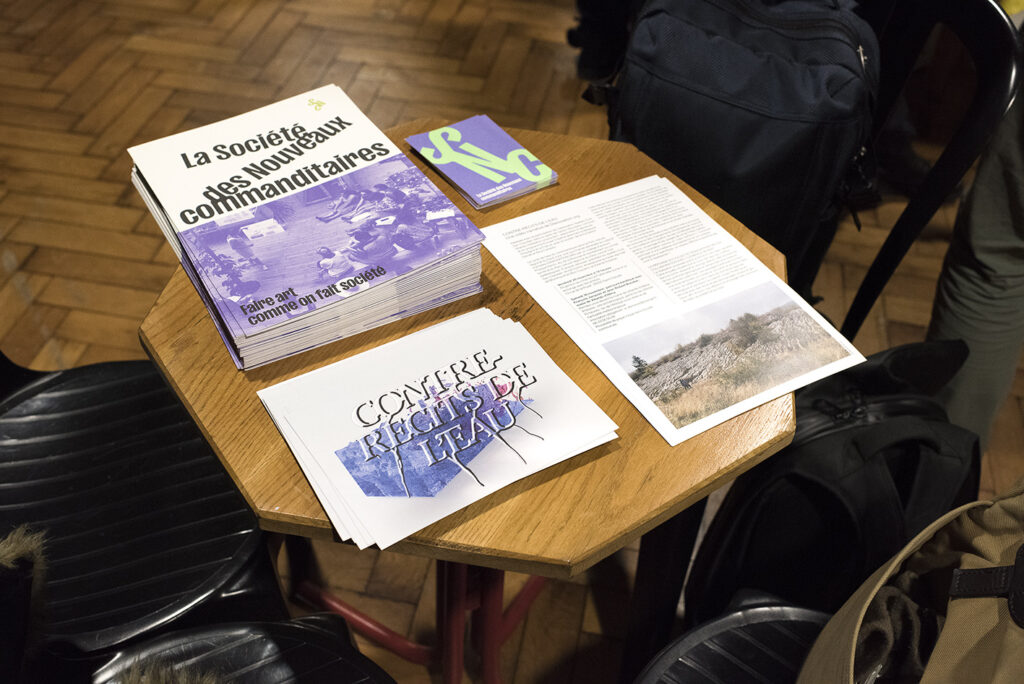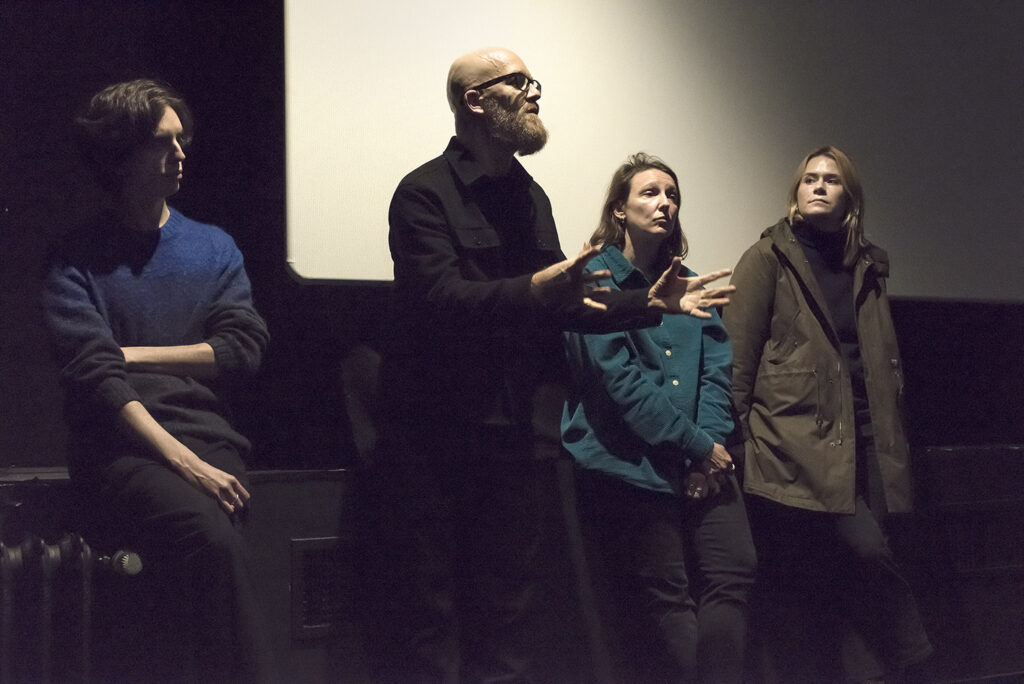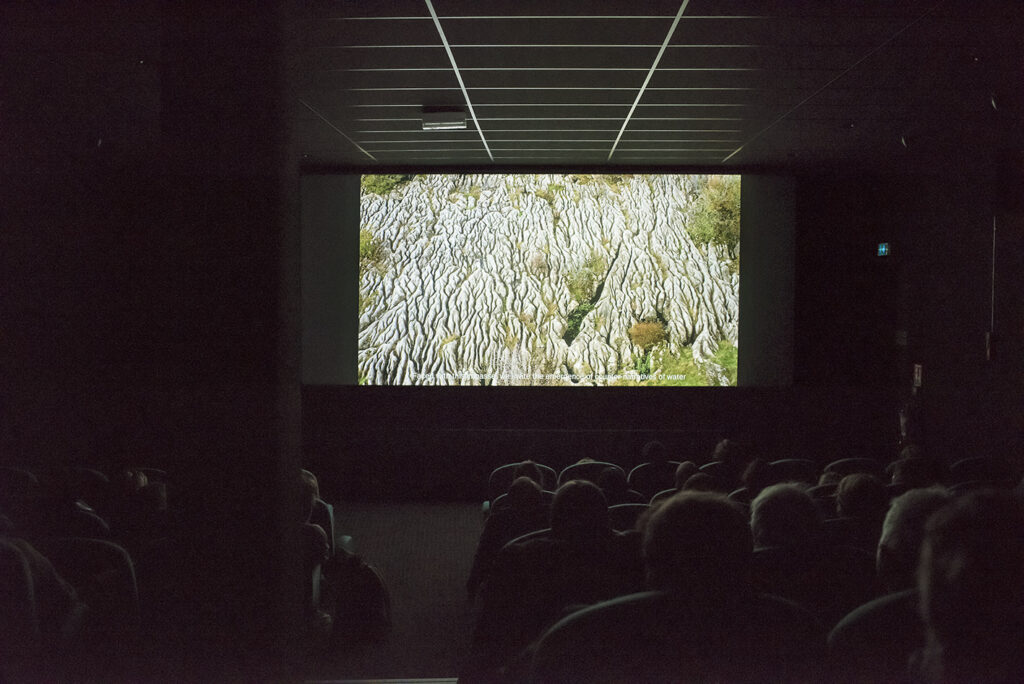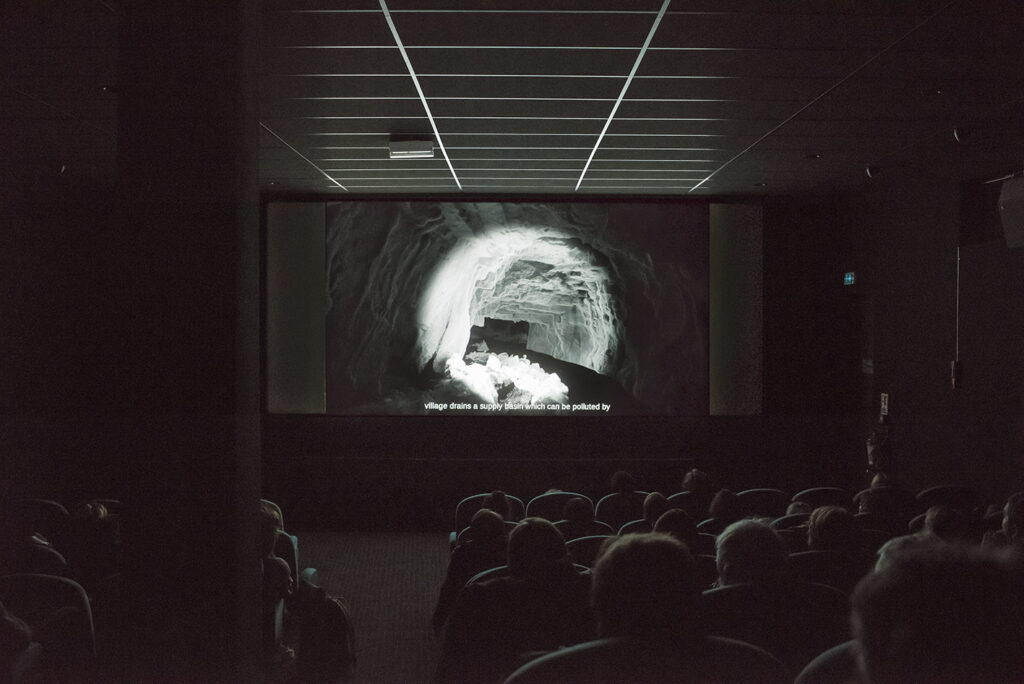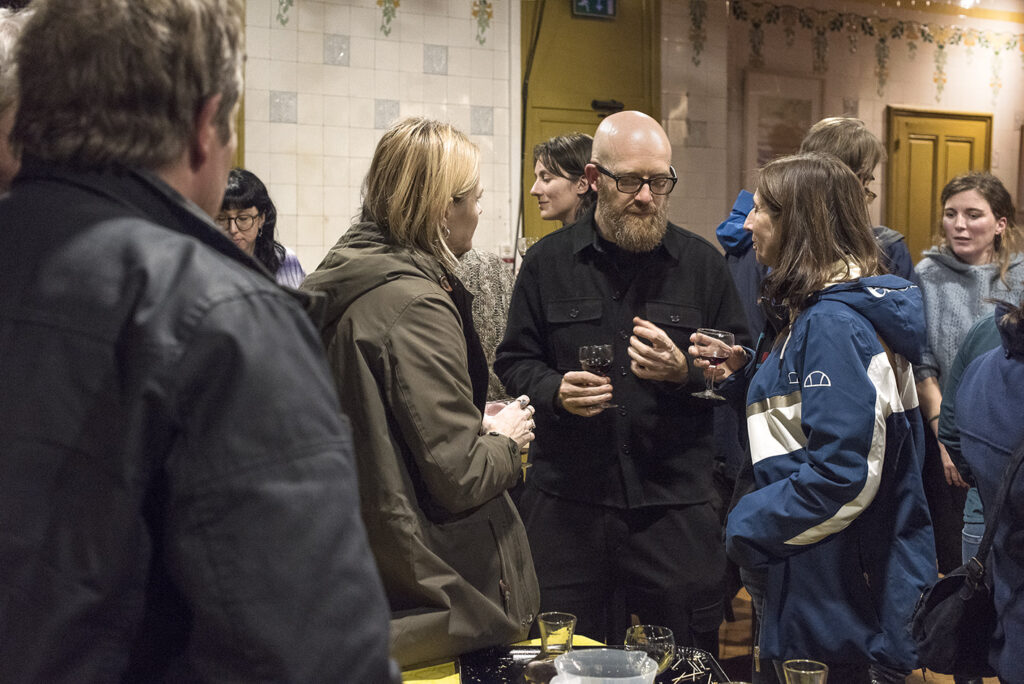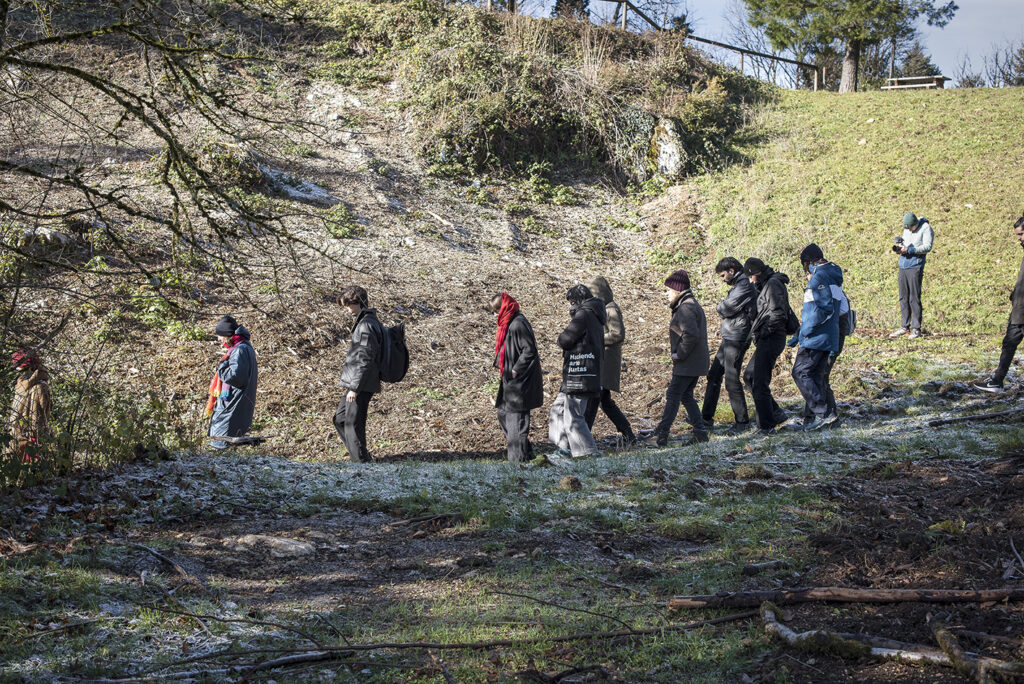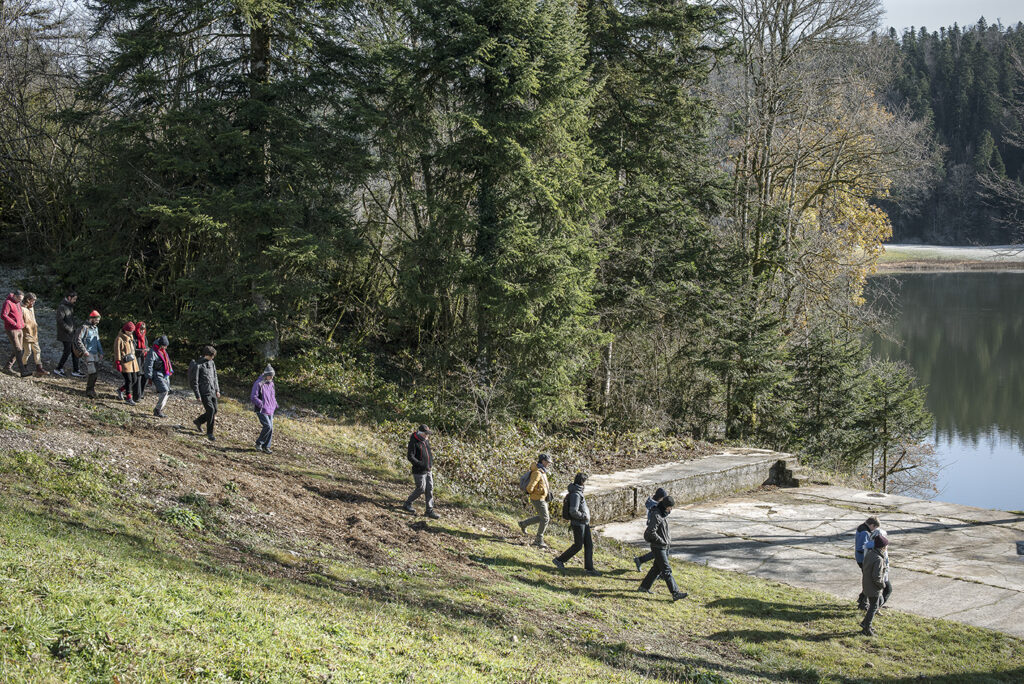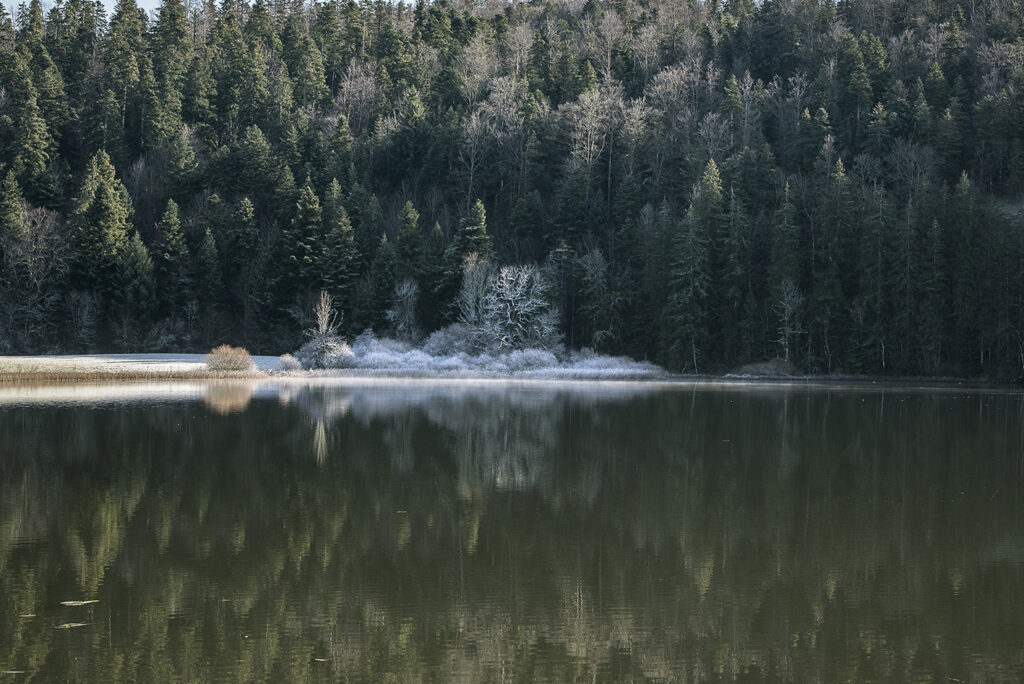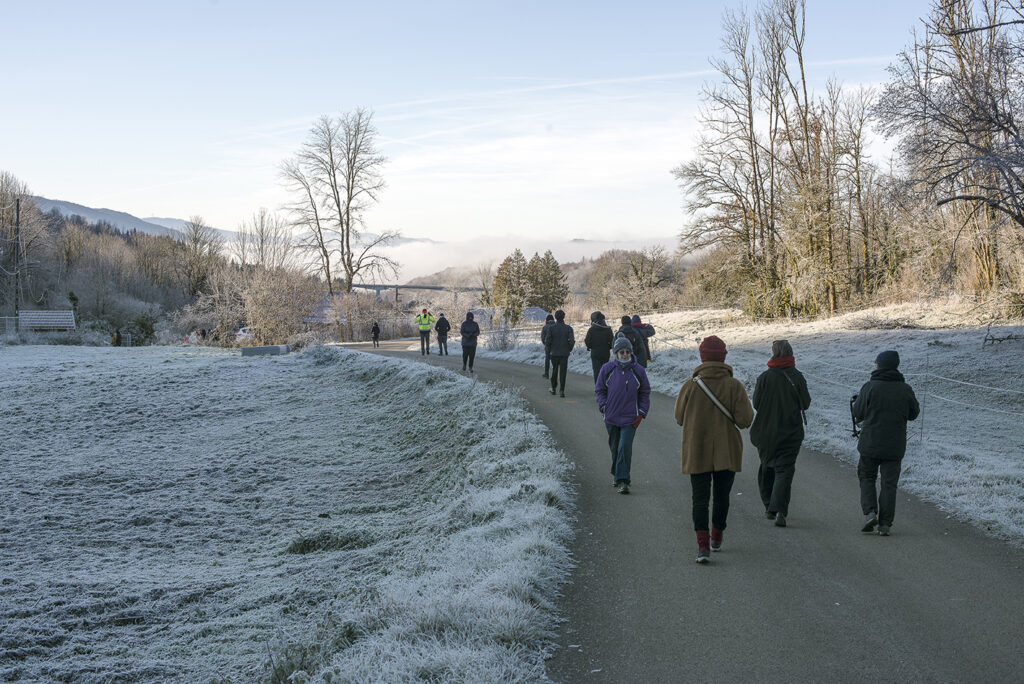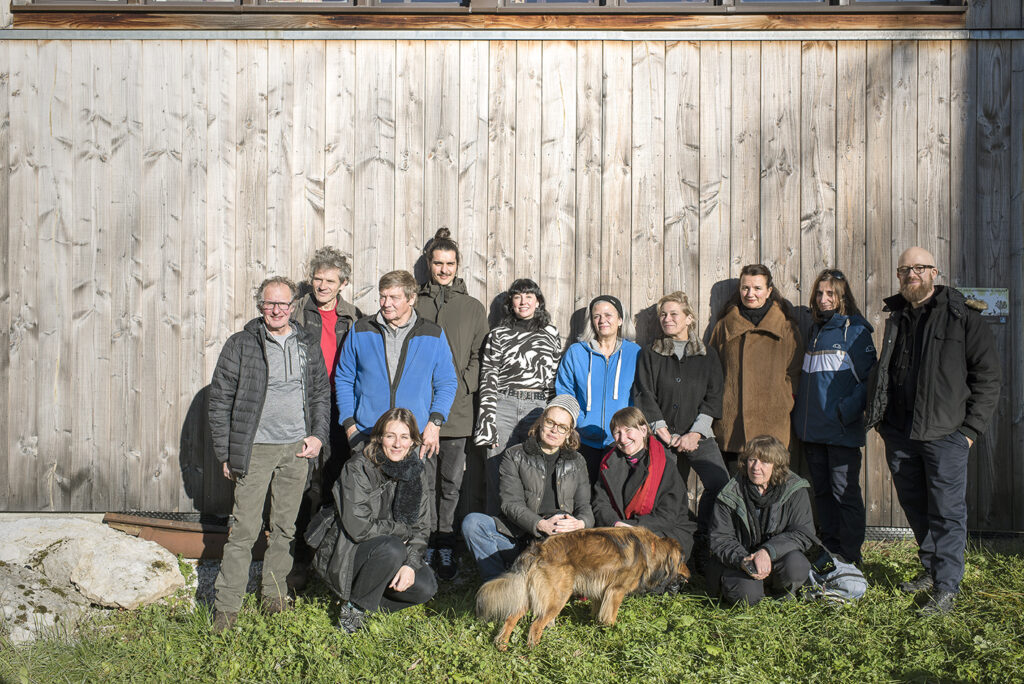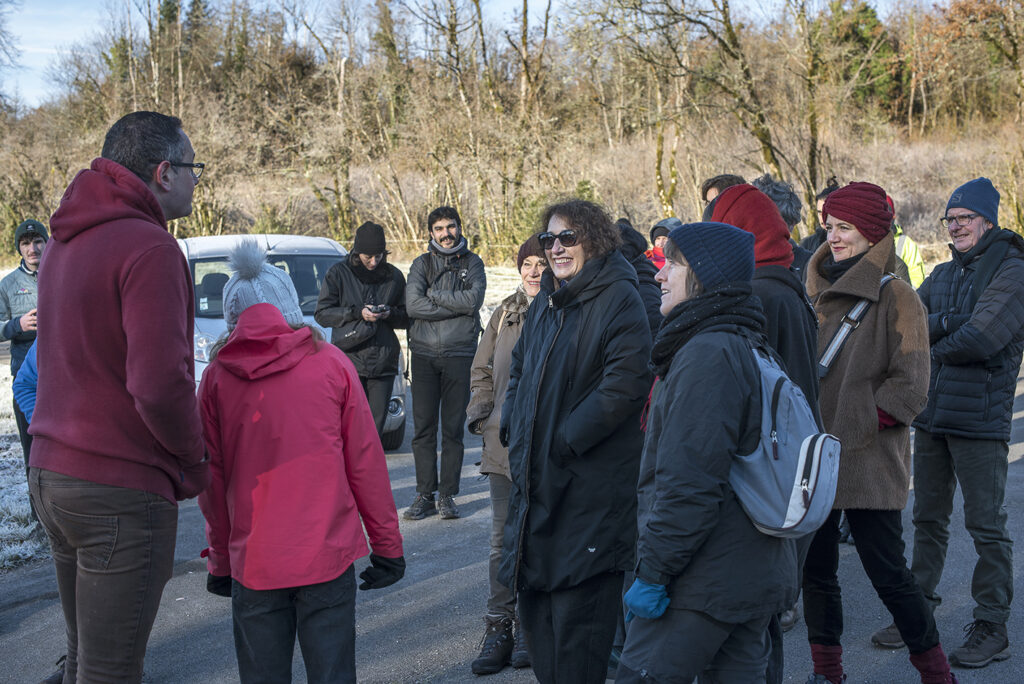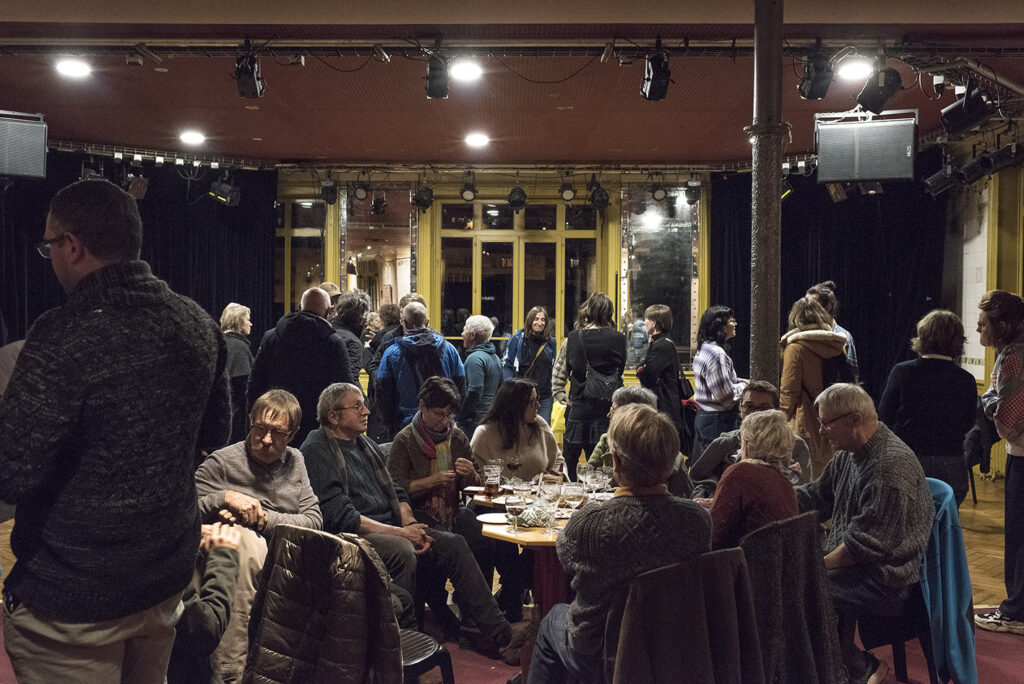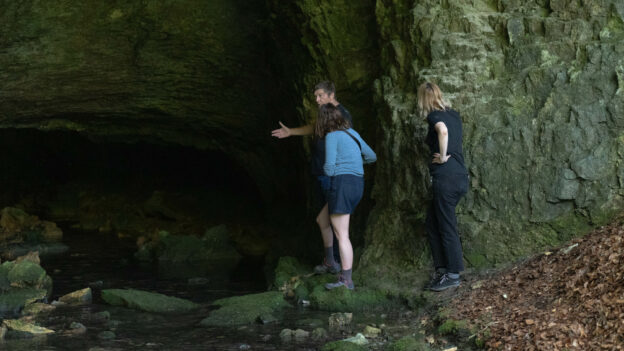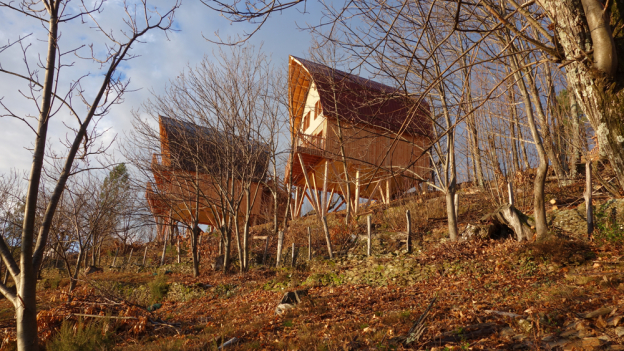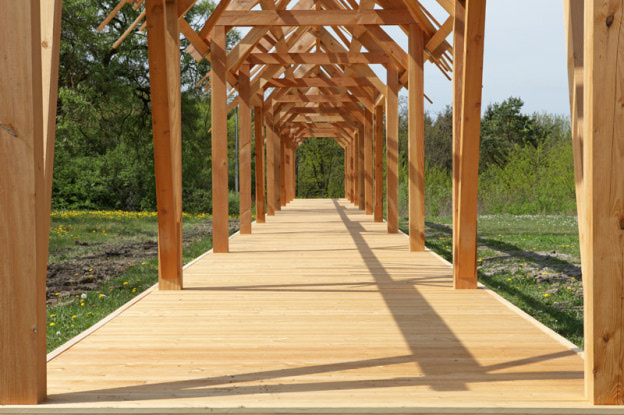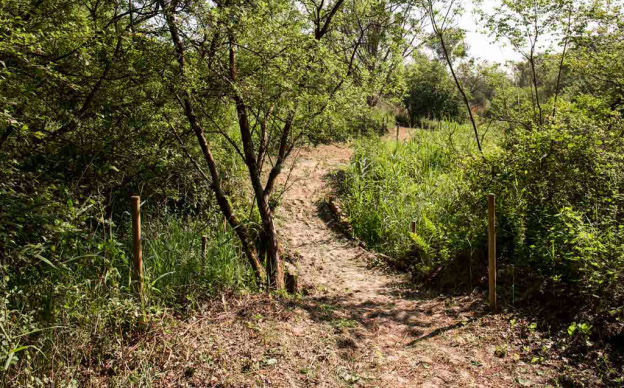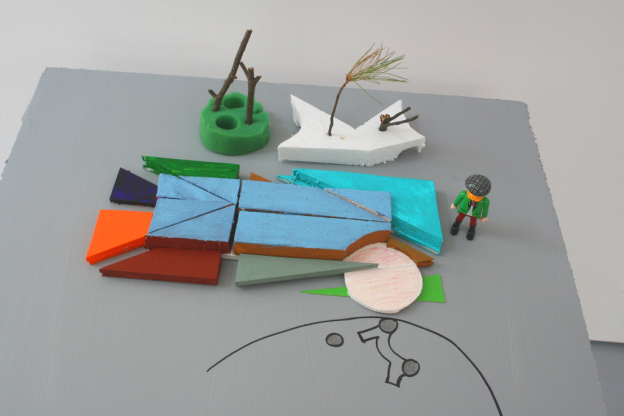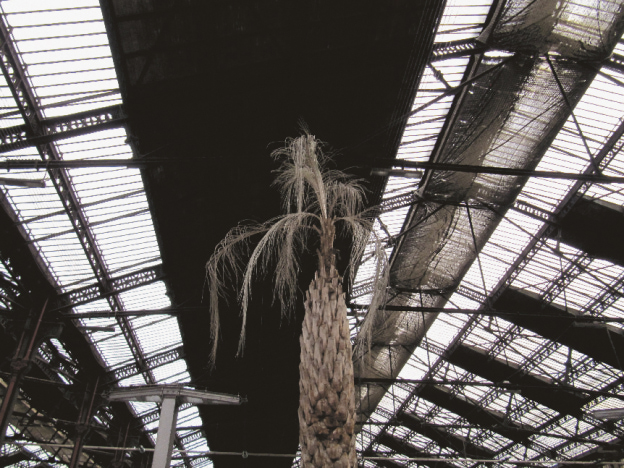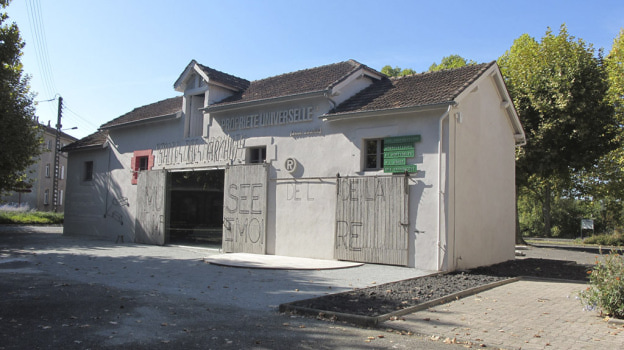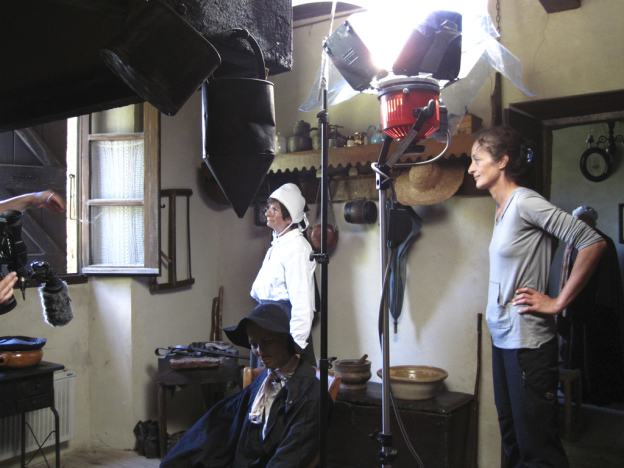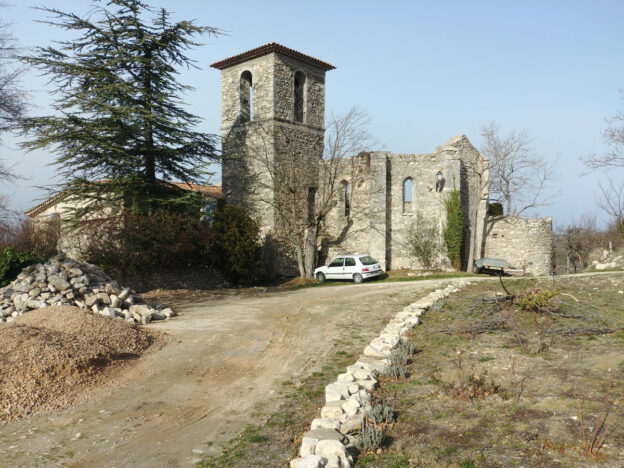Feedback Days: Friday 29th and Saturday 30th November, 2024
COUNTER-NARRATIVES ON WATER
DISNOVATION.ORG with Clémence Seurat
Feedback from the Disnovation.org collective’s commission took place over two days, on the 29th and 30th of November 2024 between Saint-Claude and Villards d’Héria.
On Friday 29th November, we welcomed professionals and interested parties mid-afternoon. A tour of the Abbey Museum by Valérie Pugin was followed by a welcome from Christophe Jonneau at La Fraternelle, the venue for the feedback session and where Disnovation.org collective’s video-narrative was presented and screened for the first time.
The opportunity to present the work at this venue – one of the symbols of Franche-Comté’s collective and cooperative history – made perfect sense, as the question of the common good lay at the heart of research carried out in the three countries. After initially establishing a food company, La Fraternelle’s history is marked by its creation of a collective social fund. This collective social fund contributes to solidarity funds and cultural groups, but will also be directed to setting up production cooperatives. Next up is a project to create a Maison du peuple inspired by the Ghent ‘Vooruit’ model!
The screening of Contre récits de l’eau (Counter-Narratives on Water) in La Fraternelle’s cinema was followed by a discussion with the artists, who retraced their journey from the start of the project to the making of the video. The discussions extended into the large La Fraternelle café, where the evening continued.
On Saturday 30th November, those who attended the screening were able to physically immerse themselves in a Jura landscape and discover karstic features as well as the archaeological site: disappearing streams; limestone pavements, revisiting certain issues raised in the video and understanding the notion of invisibility that lies at the heart of the commission in the presence of speleologist François Jacquier ; a visit to the archaeological site, the main sanctuary of the Sequani, with Jean-Robert Bondier, the mayor of Villards d’Héria. For his current term of office, Bondier is keen to develop two priorities that are fundamental to the site’s history: the question of water and the resumption of archaeological excavations at Pont des Arches. This sanctuary is a place of water worship. It comprises two sites: the upper site around Lac d’Antre, which is privately owned and not accessible, and the lower site known as ‘Pont des Arches’, which is open to the public. The two sites are intimately linked by the waters of Lac d’Antre. From the outlet of Lac d’Antre, this water feeds the lower site via a karstic fault. The water circulates in the subsoil, flowing back to the ‘puits romain’ at the centre of the Pont des Arches religious site where water is sacred.
The Roman Well, which is constantly fed, is the perennial source of the Héria. During periods of sustained rainfall, the limestone massif gradually fills up and other springs begin to gush upstream. This is the case for the ‘Puits Blanc’ followed by the ‘Puits Noir’. The former takes the form of a vast funnel lined with pebbles, sometimes empty, sometimes full to the brim with water. The ‘Puits Noir’ resembles a vast rocky chasm where the water level can vary by more than 12m depending on the weather. Unfortunately, these two karstic phenomena can only be penetrated to a limited extent by speleologists. The next stage took the group to the wilderness of Lac d’Antre. This is the upstream end of the hydrological network that feeds the Puits Romain, Puits Blanc and Puits Noir springs. In the southwest corner, the lake’s overflow is lost throughout boulders at the bottom of a rocky recess. Fluorescein tracing experiments have shown that it takes around thirty hours for the water to reappear in the three springs. A lock was built in front of the waterfall to manage the inflow of water that turned an entire group of mill wheels in the Villards-d’Héria valley.
The morning concluded at the Fournets lapiaz, a vast area of several hectares where the limestone surface is devoid of vegetation. This large, slightly sloping slab of rock features a series of aesthetically pleasing gullies and deep faults that reflect the erosion/corrosion effects of run-off water on the carbonate rock: a landscape typical of karst massifs.
The afternoon promised to be a more leisurely affair, with a wide-ranging circuit allowing our foreign guests to discover some Jura sites and landscapes in the sunshine.
RESPONSE FROM DISNOVATION.ORG COLLECTIVE IN COLLABORATION WITH CLÉMENCE SEURAT: Contre-récits de l’eau
The proposed production takes the form of a narrative video entitled Contre-récits de l’eau (Counter-Narratives on Water). This visual investigation follows the course of the water as it seeps into rock, disappears and resurfaces elsewhere, tracing the deep geological past while recounting anecdotes and collective stories. Karst landscapes form sentinel zones in the fields of agriculture, ecology and health, where we can observe a series of tensions linked to water in the present and to come. The collective is combining the resulting study with local and global testimonies in order to open up debate and envisage the common ownership of water, now and in the future.
“In modern comfort, the abundance of water and its constant availability paradoxically render it invisible. Underground circulation and complex hydrological systems, such as karsts, are relegated to the background of daily life. Water becomes a simple factor of production.
Faced with this reality, initiatives are emerging. Counter-narratives are amplifying the voices and practices that are reinventing our relationship with water and the environment, on the fringes of the dominant discourse. In the Jura, the history of cooperatives – pioneers of social security – could inspire collective water management. The karst, with its underground and borderless networks, calls for a reflection on interdependence and the common good, inviting us to imagine new cooperative utopias around water.
Through weaving together 3D illustrations, interviews, field footage and scientific images, this video essay explores the issues surrounding water in five chapters, tackling the perspectives of pre-scientific narratives, the refusal of running water, scarcity and the exploitation of waterways.” (Disnovation.org)
